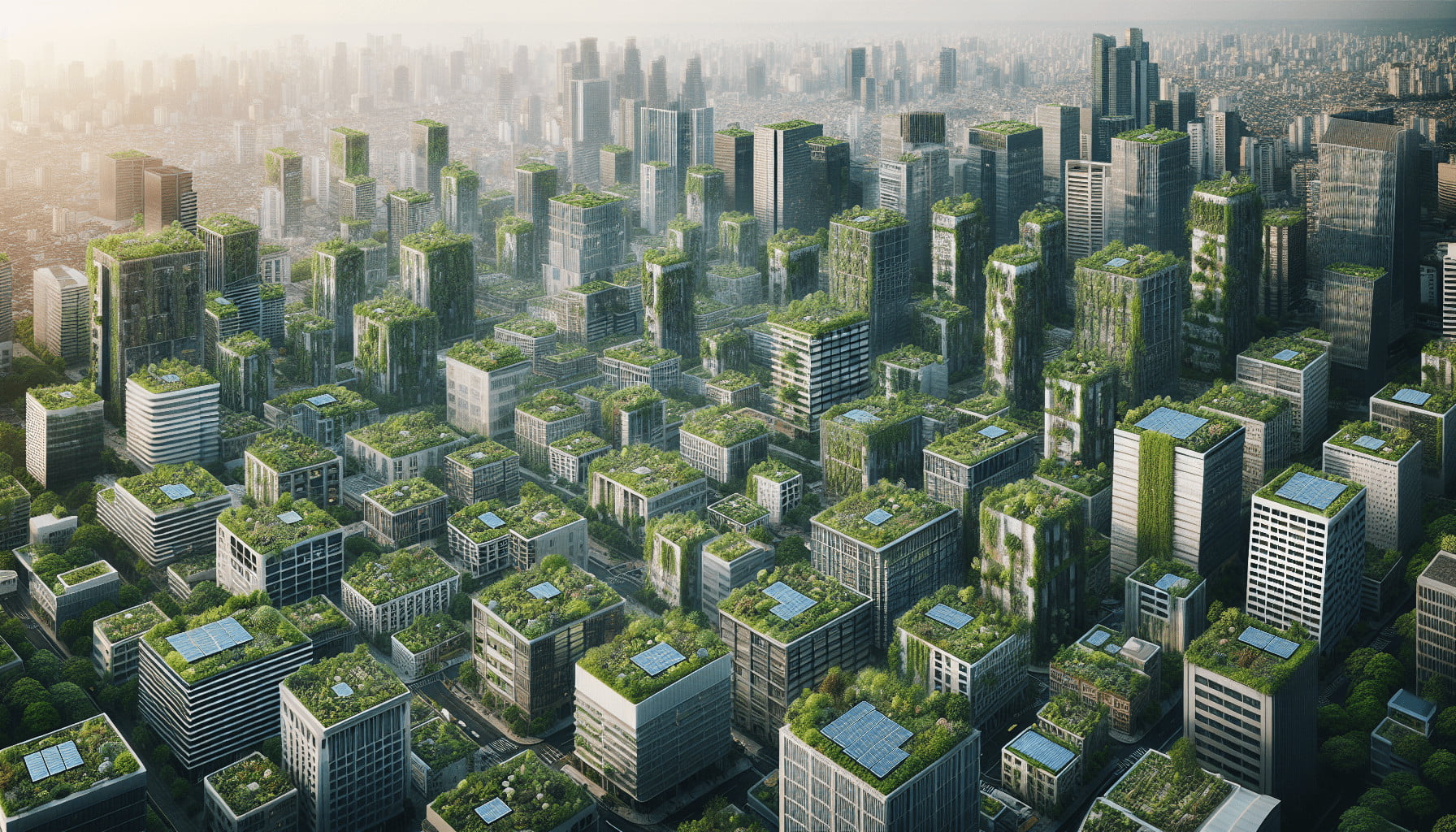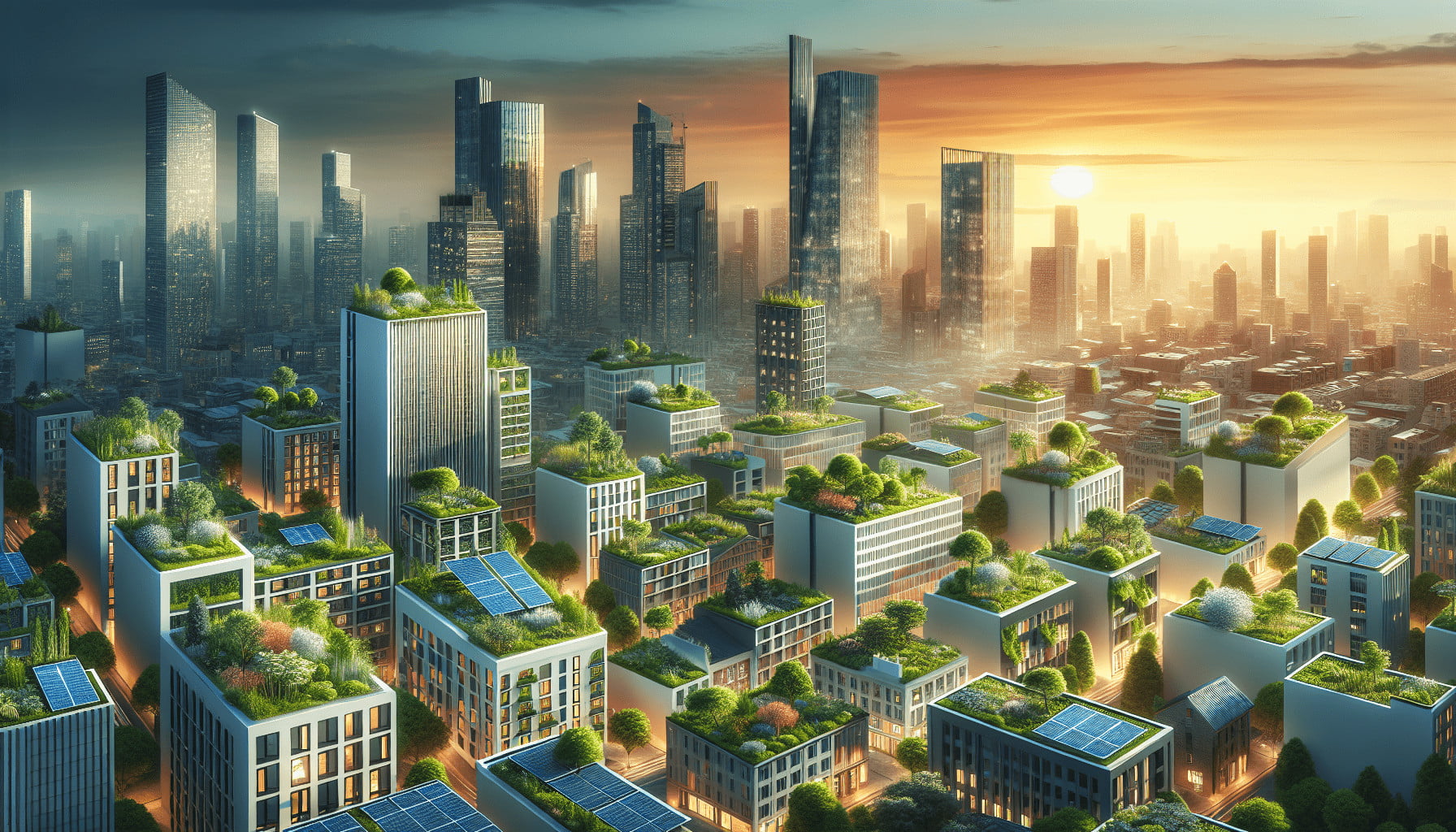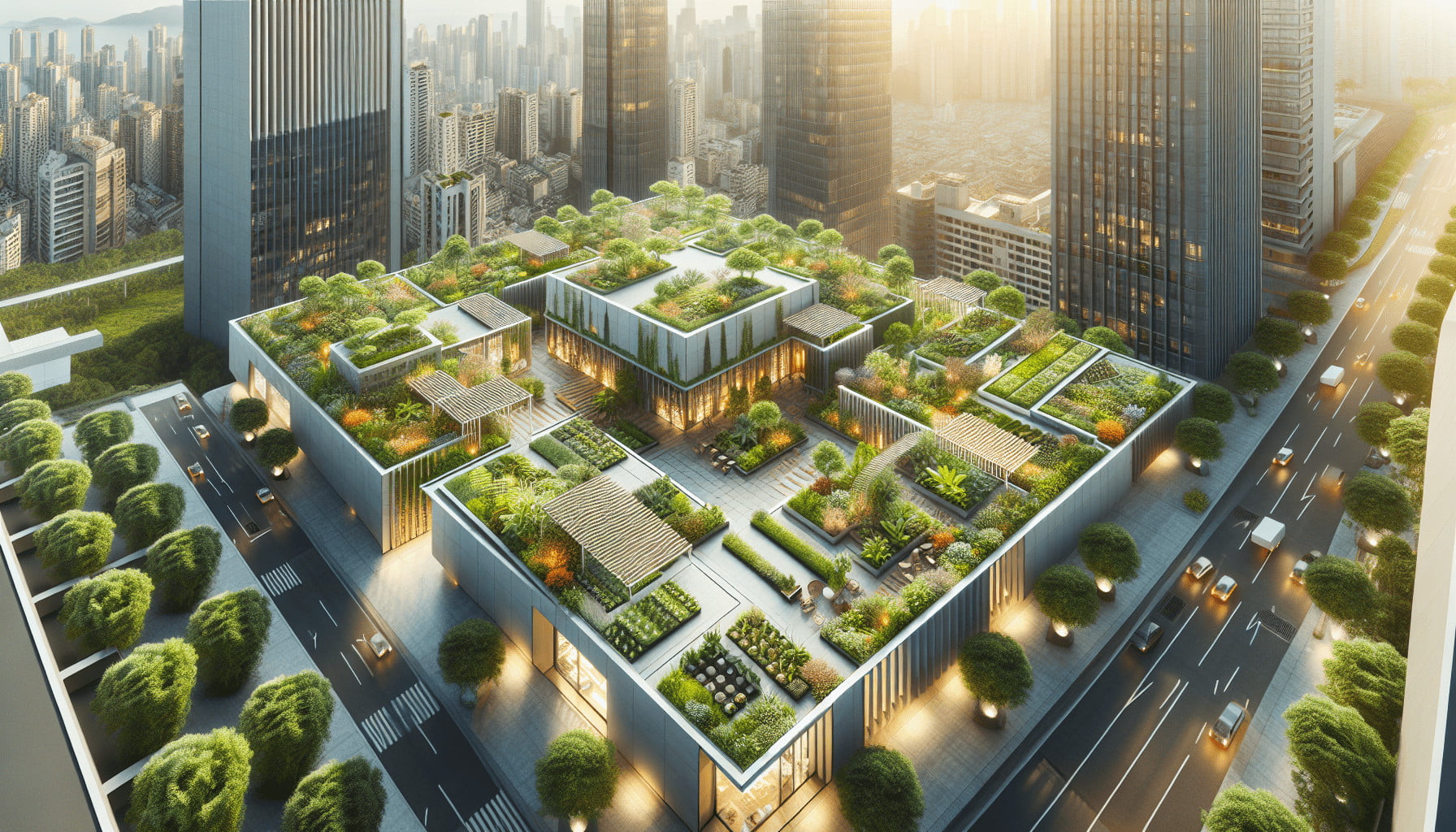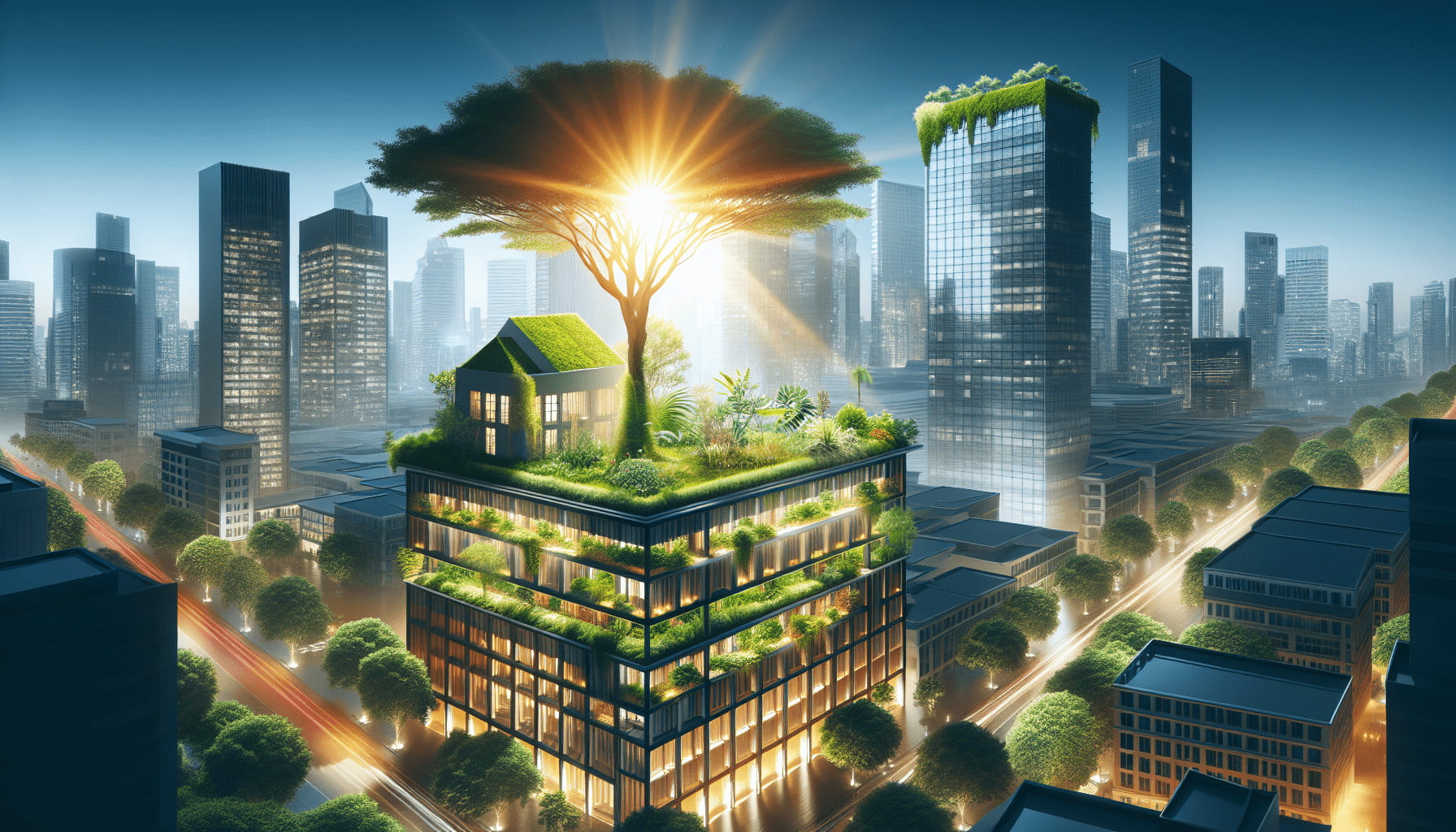Imagine transforming the dull, concrete jungle around you into a vibrant and eco-friendly oasis. In this article, you will discover the secrets to incorporating green roof technology into existing structures. Green roofs not only provide a breathtaking visual spectacle, but they also offer a wide range of benefits for both the environment and building occupants. Whether you are a homeowner looking to enhance your property or a business owner aiming to create a sustainable workplace, this article will guide you through the process of implementing green roofs with ease and efficiency. Get ready to revolutionize your surroundings and make a positive impact on the world.

Assessing Feasibility
Benefits of green roof technology
Green roof technology offers numerous benefits that make it an attractive option for incorporating into existing structures. Firstly, green roofs improve the energy efficiency of buildings by providing insulation and reducing the need for heating and cooling. This can result in significant cost savings on energy bills. Additionally, green roofs help manage stormwater runoff by absorbing rainwater and reducing the strain on local sewer systems. They also improve air quality by filtering pollutants and reducing the urban heat island effect. Lastly, green roofs provide aesthetic benefits, transforming unused rooftop space into vibrant green areas that can be enjoyed by building occupants.
Evaluating structural capacity
When considering the incorporation of green roof technology into an existing structure, it is important to assess the structural capacity of the building. Green roofs can add a significant amount of extra weight, so it is crucial to determine if the building can support the additional load. Consulting with a structural engineer is recommended to evaluate the building’s structural capacity and determine any necessary modifications.
Checking building codes and regulations
Before proceeding with the installation of a green roof, it is essential to check local building codes and regulations. Different jurisdictions may have specific requirements and restrictions regarding the installation of green roofs. It is important to ensure compliance with these regulations to avoid any legal issues or costly penalties. Obtaining the necessary permits and approvals from the local authorities is crucial in ensuring a successful and compliant green roof installation.
Considering climate and weather conditions
Climate and weather conditions play a significant role in the success and maintenance of a green roof. Factors such as temperature, rainfall, and sunlight exposure can impact the type of green roof system that is most suitable for a specific location. Assessing the local climate and weather patterns will help determine the appropriate type of green roof, the selection of plant species, and the necessary irrigation and drainage systems.
Choosing a Green Roof Type
Extensive green roofs
Extensive green roofs are characterized by their lightweight construction and shallow growing media. They typically require minimal maintenance and are well-suited for buildings with limited structural capacity. Extensive green roofs often consist of hardy, drought-tolerant plant species that can thrive in harsh weather conditions. These green roofs provide excellent stormwater management and heat insulation benefits while requiring minimal irrigation.
Intensive green roofs
Intensive green roofs are more similar to traditional gardens as they can support a wider variety of plant species and even small trees. They require a deeper growing medium and more maintenance compared to extensive green roofs. Intensive green roofs offer greater opportunities for aesthetic design and provide habitat for a diverse range of plant and animal species. However, intensive green roofs also require more structural capacity and careful planning due to their weight and maintenance needs.
Semi-intensive green roofs
Semi-intensive green roofs combine elements of both extensive and intensive green roofs. They typically feature a deeper growing medium than extensive green roofs, allowing for a wider variety of plant species. While semi-intensive green roofs require more maintenance than extensive green roofs, they offer greater flexibility in terms of design and plant selection. These green roofs provide a balance between aesthetics and functionality, making them a popular choice for many projects.
Selecting the most suitable option based on project requirements
The choice of green roof type ultimately depends on the specific requirements and goals of the project. Factors to consider include the structural capacity of the building, available maintenance resources, desired aesthetics, and climate conditions. It is important to carefully evaluate these factors to select the most suitable green roof type that will best meet the project’s objectives and ensure long-term success.
Structural Modifications
Consulting with a structural engineer
Before proceeding with any structural modifications, it is crucial to consult with a qualified structural engineer. The structural engineer will assess the existing building’s capacity and determine if any reinforcements or adjustments are necessary to accommodate the added weight of the green roof. Their expertise will ensure that the modifications are carried out safely and in compliance with applicable regulations.
Ensuring proper load distribution
Proper load distribution is essential to prevent any structural issues when incorporating a green roof. The structural engineer will carefully calculate the additional load that the green roof system will impose on the building and ensure that it is distributed evenly to avoid placing excessive stress on any specific areas. This will help maintain the overall structural integrity of the building.
Reinforcing the existing structure if necessary
In some cases, the existing structure may require reinforcement to adequately support the weight of the green roof. This can involve strengthening load-bearing walls, columns, or beams. The structural engineer will determine the most suitable reinforcement methods based on the specific needs of the building and the green roof design.
Addressing waterproofing and drainage requirements
The incorporation of a green roof necessitates careful consideration of waterproofing and drainage requirements. It is crucial to ensure that the roof surface is properly waterproofed to prevent water infiltration into the building. Additionally, a well-designed drainage system is essential to channel excess water away from the roof and prevent water pooling or damage. Consulting with a roofing and waterproofing expert will help address these requirements and ensure the long-term effectiveness of the green roof system.
Preparing the Roof Surface
Removing any existing materials or debris
Before installing a green roof system, it is necessary to clear the roof surface of any existing materials or debris. This may include removing old roofing materials, vegetation, or other obstructions. A clean roof surface will provide a suitable foundation for the installation of the green roof system and prevent any potential issues in the future.
Repairing damaged sections
Inspecting the roof for any damages and repairing them is crucial to prevent water leakage and structural issues. Any cracks, holes, or damaged sections should be properly repaired and sealed to ensure the integrity of the roof surface. This will help create a solid base for the green roof installation and minimize the risk of future problems.
Applying a waterproofing membrane
To protect the underlying structure and prevent water infiltration, applying a waterproofing membrane is essential. The waterproofing membrane acts as a barrier between the green roof system and the building, ensuring that water does not seep through and cause damage. There are various types of waterproofing membranes available, and it is important to choose the most suitable option based on factors such as climate, budget, and local regulations.
Installing a root barrier
To prevent the plant roots from penetrating the waterproofing membrane and potentially compromising its effectiveness, a root barrier is typically installed. The root barrier acts as a protective layer between the growing media and the waterproofing membrane, ensuring that the roots remain contained within the designated areas. This helps maintain the longevity and integrity of the green roof system.

Installing the Green Roof System
Choosing suitable growing media
Selecting the appropriate growing media is crucial for the success of a green roof. The growing media should have sufficient drainage capacity, be light enough to minimize additional weight on the structure, and provide adequate nutrients for plant growth. Consulting with a green roof consultant or horticulturist can help determine the best-suited growing media for the specific project and location.
Selecting appropriate plant species
Choosing the right plant species is key to the long-term viability and success of the green roof system. Factors such as climate, sunlight exposure, and the intended purpose of the green roof should be considered when selecting plants. Drought-tolerant and hardy plant species are often preferred for green roofs, as they require less maintenance and can withstand harsh weather conditions.
Installing an irrigation system
Ensuring proper irrigation is crucial for the health and vitality of the green roof vegetation. Depending on the specific green roof design and climate conditions, different types of irrigation systems can be used, such as drip irrigation or sprinklers. The irrigation system should be properly installed to provide adequate water supply to the plants while avoiding overwatering or water waste.
Placing vegetation and establishing planting beds
Once the growing media and irrigation system are in place, the vegetation can be planted, and planting beds can be established. This process involves carefully placing the desired plant species in designated areas and creating a visually appealing arrangement. It is important to follow planting guidelines and spacing recommendations to ensure proper growth and maintenance of the green roof system.
Maintenance and Upkeep
Implementing a regular maintenance schedule
Regular maintenance is crucial to ensure the longevity and optimal performance of the green roof system. Implementing a maintenance schedule will help keep track of essential tasks and ensure that they are carried out in a timely manner. Maintenance tasks may include pruning, fertilizing, controlling weeds, inspecting the roof surface, and addressing any necessary repairs.
Pruning and weeding
Pruning and weeding are important maintenance tasks to keep the vegetation on the green roof in optimal condition. Pruning helps promote healthy growth and prevents overcrowding, while weeding helps control unwanted plant species that may compete with the desired plants for resources. Regular pruning and weeding will help maintain the aesthetic appeal of the green roof and prevent any potential issues.
Inspecting and repairing the roof system
Regular inspections of the green roof system are essential to identify any signs of damage or issues that may require repairs. This includes checking for leaks, damage to the waterproofing membrane, or any structural issues. Promptly addressing any necessary repairs will help prevent further damage and ensure that the green roof system continues to function effectively.
Monitoring irrigation and drainage
Monitoring the irrigation and drainage systems is crucial to ensure that the plants receive adequate water and that excess water is properly drained. This involves checking the irrigation system for any malfunctions or leaks and ensuring that it is delivering water evenly to all areas of the green roof. Regularly inspecting and maintaining the drainage system will help prevent water pooling or drainage issues that could potentially damage the green roof system.

Monitoring Environmental Benefits
Assessing energy savings
One of the significant environmental benefits of green roof technology is its potential to save energy. Green roofs can provide insulation, reducing the need for heating and cooling in buildings. Monitoring energy consumption and comparing it to previous records before the installation of the green roof can help assess the energy-saving benefits and calculate the cost savings resulting from reduced energy usage.
Measuring stormwater management effectiveness
Green roofs are effective in managing stormwater runoff by absorbing rainwater and reducing the strain on local sewer systems. Regular monitoring and measurement of stormwater runoff can help evaluate the effectiveness of the green roof system in retaining and slowly releasing rainwater. Comparing the pre-installation and post-installation stormwater runoff rates can provide valuable insights into the stormwater management benefits of the green roof.
Evaluating air quality improvement
Green roofs contribute to improving air quality by filtering pollutants and reducing the urban heat island effect. Monitoring air quality parameters such as particulate matter, nitrogen dioxide levels, or temperature can help assess the impact of the green roof on local air quality. Regular measurements and comparisons with nearby areas can provide insight into the air quality improvements resulting from the green roof.
Monitoring urban heat island reduction
Urban heat islands, characterized by higher temperatures in urban areas compared to surrounding rural areas, can be mitigated by the implementation of green roofs. Monitoring and comparing temperature data from areas with green roofs to non-green roof areas can help evaluate the effectiveness of green roofs in reducing urban heat island effects. This data can also inform future green roof installations and urban planning initiatives focused on heat reduction.
Engaging Professionals
Hiring a qualified green roof consultant
To ensure a successful incorporation of green roof technology into existing structures, it is advisable to hire a qualified green roof consultant. Green roof consultants have expertise in design, installation, and maintenance and can provide guidance throughout the entire process. They can assess project feasibility, recommend suitable green roof types, and coordinate with other professionals involved in the project.
Engaging architects and landscape designers
Architects and landscape designers play a crucial role in incorporating green roof technology into existing structures. They can help ensure that the green roof design aligns with the overall architectural vision, seamlessly integrating the green roof into the existing structure. Their expertise in landscape design can also contribute to creating aesthetically pleasing and functional green roof spaces.
Coordinating with roofing and waterproofing experts
Incorporating green roof technology often requires coordination with roofing and waterproofing experts to ensure that the existing roof structure is properly prepared and protected. These experts are well-versed in the materials and techniques required for the successful installation of green roofs and can provide valuable insights and recommendations.
Seeking advice from local environmental agencies
Local environmental agencies can provide valuable advice and guidance throughout the process of incorporating green roof technology. They can assist in navigating regulatory requirements, provide information on available incentives or grants, and offer guidance on environmental considerations. Seeking advice and input from these agencies can help ensure a successful and compliant green roof installation.

Considering Financial Aspects
Determining the initial installation cost
The cost of installing a green roof can vary depending on factors such as the size of the roof, the chosen green roof type, and the complexity of the project. It is essential to determine the initial installation costs to evaluate the financial feasibility of incorporating green roof technology into existing structures. Obtaining detailed cost estimates from green roof consultants, contractors, and suppliers will help establish a realistic budget.
Calculating long-term maintenance expenses
While green roofs generally require less maintenance compared to traditional roofs, there are still ongoing costs associated with their upkeep. Calculating the long-term maintenance expenses will help assess the financial commitment required to sustain the green roof system. This includes considerations such as irrigation costs, maintenance labor, plant replacement, and occasional repairs.
Exploring potential financial incentives
To encourage the adoption of green roof technology, many municipalities and organizations offer financial incentives. These incentives can include tax credits, grants, or rebates to offset some of the installation costs. Researching and exploring potential incentives available in the project’s location will help determine if there are any financial benefits to incorporating green roof technology into the existing structure.
Assessing return on investment
Assessing the return on investment (ROI) is crucial when considering the financial aspects of incorporating green roof technology. The ROI analysis evaluates the financial benefits and cost savings resulting from the installation of green roofs compared to the initial investment and ongoing maintenance expenses. It may include factors such as energy savings, increased property value, and potential reduction in stormwater management fees. Conducting a thorough ROI analysis will help determine the economic viability and long-term financial benefits of incorporating green roof technology into existing structures.
Case Studies and Success Stories
Showcasing existing buildings with green roofs
Case studies and success stories of existing buildings with green roofs serve as valuable examples of the feasibility and benefits of incorporating this technology. These examples can showcase various green roof types, design approaches, and their impact on energy savings, stormwater management, and the environment. By highlighting successful green roof projects, these case studies inspire and motivate others to consider adopting green roof technology.
Highlighting the benefits and challenges
Case studies and success stories of green roofs also provide an opportunity to highlight both the benefits and challenges associated with this technology. They can address the positive impacts on energy efficiency, stormwater management, and air quality improvement, as well as potential challenges such as maintenance requirements or initial installation costs. By providing a balanced perspective, these examples help stakeholders make informed decisions regarding green roof implementation.
Sharing experiences and lessons learned
Sharing experiences and lessons learned from green roof projects can provide valuable insights into the process and offer practical advice for others considering incorporating this technology. These stories can include information on project planning, coordination with professionals, overcoming challenges, and achieving successful outcomes. By sharing experiences and lessons learned, stakeholders can learn from previous projects and make informed decisions during their green roof implementation process.
Inspiring and motivating others to adopt green roof technology
Case studies and success stories are not only informative but also serve to inspire and motivate others to adopt green roof technology. By showcasing the positive impacts and benefits, they demonstrate the potential of green roofs to enhance buildings, improve environmental sustainability, and contribute to a greener future. Inspiring others to embrace green roof technology can lead to a widespread adoption of this environmentally friendly innovation.
In conclusion, incorporating green roof technology into existing structures requires a comprehensive approach that includes assessing feasibility, choosing the appropriate green roof type, making structural modifications, preparing the roof surface, installing the green roof system, implementing maintenance practices, monitoring environmental benefits, engaging professionals, considering financial aspects, and learning from case studies and success stories. By following these steps and considering all relevant factors, building owners and stakeholders can successfully incorporate green roof technology and reap the numerous benefits it provides.
